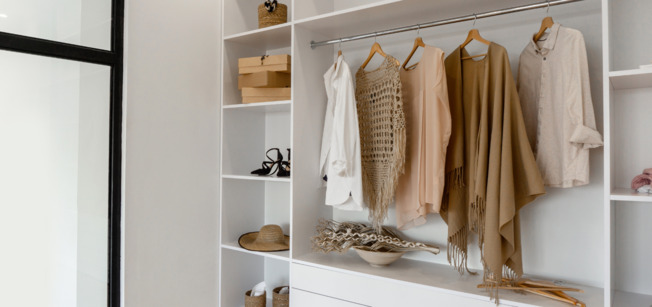
How to Take a Home Office Tax Deduction if You Rent

By Rachel Craft
Sep 07, 2023
More and more people are working from home, but not all of them realize they can take a home office tax deduction — even if they rent. How do you know if you qualify for this deduction, and what do you have to do to take advantage of it?
What do I need to qualify for a home office tax deduction?
Under current tax laws, you must be self-employed or an independent contractor in order to deduct your home office expenses when filing your income tax return — but this may change soon.
“As a result of the 2017 Tax Cuts and Jobs Act (TCJA), anyone who earns a living via salary can no longer itemize unreimbursed business expenses, including the business use of home,” says Ernie Villany, a CPA from Louisville, CO. “That tax law sunsets at the end of 2025, and if Congress doesn’t extend it, we will revert back to the old way.”
This means that in a few years, salaried employees could be able to start deducting their home office expenses. Until then, you must be self-employed to take advantage of the home office tax deduction. “Self-employed” includes not only sole proprietors, but also general partners in a partnership or LLC that hasn’t elected to be taxed as a corporation.
For those who are self-employed, what constitutes a home office? The answer is broader than you might think. A home office doesn’t need to be an entire room; it could be a converted closet, a corner of your living room, or even a desk. But for the IRS to consider it a home office, it must meet three requirements: exclusivity, regular use, and precedence.
Exclusivity means your home office must be used solely for business activities. You won’t qualify for any tax write-offs if your office space is also for “personal use,” like if you use it as a workout area or a kitchen table. Your home office doesn’t have to be marked off by a permanent partition, but it must have clearly identifiable boundaries and be used for business purposes only.
In over two decades as a tax professional, Villany says he’s seen plenty of taxpayers get creative with their home office spaces: “I have seen people in studio apartments use neon tape, curtains, and signage to support the exclusive use of a very small space.”
Regularity means your home office must be used on a regular, predictable schedule — though you get to decide what that schedule is. It doesn’t have to be 9 AM to 5 PM, Monday to Friday, and it doesn’t have to add up to 40 hours. You could work every morning, or weekends only, or Tuesday and Thursday nights — as long as it’s regular. Using the space once every few weeks for the odd freelance job, on the other hand, probably won’t qualify.
Precedence means your home office must be your principal place of business. You may work out of other spaces sometimes, or your line of work may take you on regular field trips (for instance, house tours if you’re a realtor). But you should be spending the most time and conducting the most important business activities out of the office portion of your home.
How do I claim the home office tax deduction as a renter?
If you qualify for the home office deduction, you’ll need to fill out a couple of extra tax forms.
For a sole proprietorship, use Form 8829 to calculate your deductible expenses for the previous year, then report them on Schedule C of Form 1040. If you’re a member of a partnership or LLC that hasn’t elected to be taxed as a corporation, use the worksheet in Publication 587 to calculate your home office deduction, then claim it on Form 1040 Schedule E as an unreimbursed partner expense.
Your deductions will include what the IRS calls direct and indirect expenses. Direct expenses apply solely to your home office and are 100% deductible. These include necessary repairs for that area of the home — which, for renters, probably won’t be deductible because they’re covered by the landlord. However, renters can still write off other direct expenses like office furniture and office supplies.
Indirect expenses relate to maintenance of the entire home, and there are two ways to calculate them: simplified and standard. The simplified option allows you to deduct $5 per square foot, with a maximum of 300 square feet. The standard option requires more work, and a slightly higher audit risk, but can save you more money. You’ll have to calculate your office’s square footage and its total percentage in the home, then deduct that percentage from your rent, utilities, and renters insurance.
For instance, if your apartment is 700 square feet and you dedicate a 70 square foot part of your home to your home office, you would deduct 10% of your indirect expenses using the standard method. This could add up to a lot of savings. Say you’re paying $1,800 per month (the going rate for a one-bedroom apartment in Denver, CO), or $21,600 per year. You can deduct 10% of that rent, or $2,160 — and that doesn’t include things like utilities and insurance. Compare that to the simplified business deduction of $5 per square foot, which would net you a savings of $350.
When asked how to decide between the standard and simplified options, Villany says: “How good are your records? Can you easily gather the data required, calculate the percentage of use, and eventually defend your deduction? If not, the simplified method is better. If you are a good record keeper, have properly done the square footage analysis, and are comfortable with the IRS audit risk, the regular method can deliver better results.”
How can I set up a home office in a small space?
For many renters, setting aside space just for work can be a challenge. However, there are creative ways to squeeze a qualifying home office into even the smallest apartment:
- Take advantage of unusual floorplans. If an area of your home has a nook or corner that you can’t find a use for, see if you can turn it into an office.
- Place only business items in your office space. This could mean a laptop if you’re a writer, easels if you’re an artist, or a seating area to host client meetings if you’re a consultant. Avoid putting anything suspicious, like a TV, in your office, because this could make the space harder to justify during an audit.
- Invest in whatever furniture or shelves you need to organize your office supplies — and don’t forget to deduct them as related expenses. Make use of vertical space by storing things on shelves above your desk or in drawers underneath.
When asked if he has any advice for renters, Villany says, “Document, document, document. Do it early and thoroughly. Nothing sends an IRS auditor packing faster than a well-prepared taxpayer.”
Top cities
Atlanta Apartments
1,977 apartments starting at $600/month
Austin Apartments
4,908 apartments starting at $600/month
Baltimore Apartments
1,455 apartments starting at $500/month
Boston Apartments
3,442 apartments starting at $940/month
Charlotte Apartments
2,848 apartments starting at $450/month
Chicago Apartments
3,995 apartments starting at $450/month
Dallas Apartments
5,609 apartments starting at $604/month
Fort Worth Apartments
2,199 apartments starting at $600/month
Houston Apartments
4,451 apartments starting at $600/month
Las Vegas Apartments
1,080 apartments starting at $704/month
Los Angeles Apartments
10,138 apartments starting at $625/month
Miami Apartments
553 apartments starting at $1,000/month
Milwaukee Apartments
903 apartments starting at $465/month
New York Apartments
3,690 apartments starting at $550/month
Oakland Apartments
605 apartments starting at $750/month
Orlando Apartments
845 apartments starting at $850/month
Philadelphia Apartments
3,579 apartments starting at $550/month
Phoenix Apartments
4,147 apartments starting at $611/month
Pittsburgh Apartments
1,223 apartments starting at $600/month
Portland Apartments
2,592 apartments starting at $599/month
Raleigh Apartments
1,358 apartments starting at $750/month
San Antonio Apartments
3,942 apartments starting at $525/month
San Diego Apartments
2,957 apartments starting at $650/month
San Francisco Apartments
440 apartments starting at $675/month
San Jose Apartments
409 apartments starting at $1,300/month
Seattle Apartments
3,620 apartments starting at $450/month
Tampa Apartments
1,050 apartments starting at $800/month
Washington DC Apartments
2,945 apartments starting at $745/month


